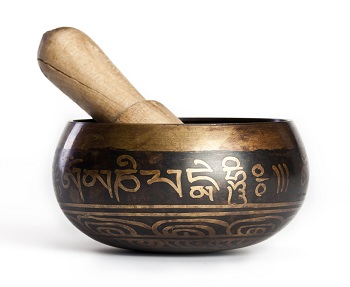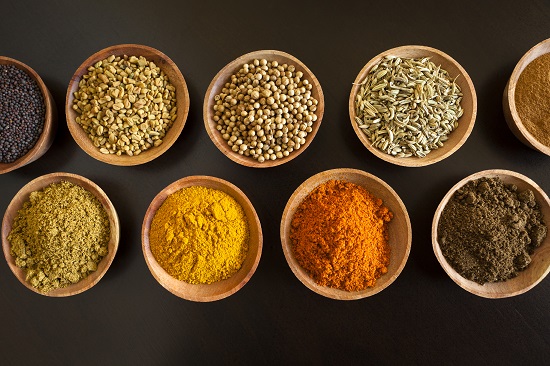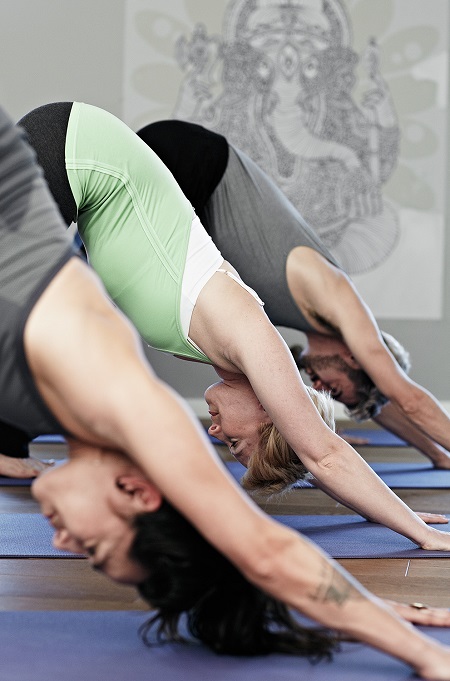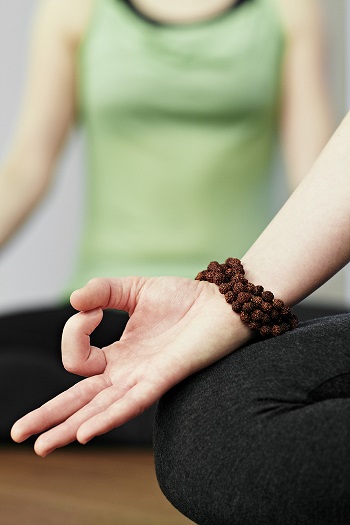Positive Health Online
Your Country

Love Your Lungs The Ayurveda Way
listed in ayurveda, originally published in issue 226 - November 2015
In Ayurveda certain parts of the body are associated with a particular element. Lungs in Ayurveda hold a memory of the air element, associated with a Vata dosha - the energy of movement. When too much Vata (space +air) accumulates in the lungs we experience breathlessness, dry coughs, asthma, hoarseness of the voice, weak voice, pain when breathing, allergies related to breathing or wheezing. Excess Pitta (fire +water) in the lungs results in yellow and green spitting, bleeding, bronchitis, infections or inflammations. Excess Kapha (water +earth) in your lungs results in mucus congestion, phlegm, wet cough, lung nodules, hay fever, pneumonia or swollen glands.

Main Causes of Lung Imbalance
- Improper diet - eating heavy, oily, cold and hard to digest foods or leftovers especially in the morning or evening, during autumn and early spring. Combining dairy with meat, fish or fruit is another very important dietary mistake as it creates a toxic residue in the body causing congestion and blockages;
- Polluted air, smoke, exhaust fumes, dust, pollen, dirt and other toxic particles circulating in the air irritating the lungs;
- Holding natural urges i.e. to urinate, to move the bowels, sneeze, yawn or even to cry can disturb the correct movement of the energy and excretion of the body and can lead to lowered immunity in the lungs;
- Seasonal changes, especially in autumn and early spring make us more prone to respiratory problems. That is because our bodies function differently in each season due to the different temperatures and climate conditions;
- Poor posture - working at a computer for long hours with bad posture is a common cause of rib and chest pain. Holding other awkward postures for a length of time like sleeping on your front, or using the ‘wrong’ pillow can also be bad for your lungs. Stretching tight chest muscles and strengthening opposing back muscles can help bring your back into an upright posture. Furthermore, engaging the core abdominals and glutes will improve overall stance and prevent injury;
- Lack of or excessive exercise - Heavy lifting beyond your capacity, especially next to the chest or jumping from a high place can strain your chest and lungs. Insufficient movement affects your lung capacity and reduces the amount of oxygen in your bloodstream leading to chronic problems;
- Excessive grief, attachment, jealousy or an overload of mental or/and emotional stress.

Herbs
- Cardamom is an aromatic, stimulating and refreshing herb. It ignites digestive fire, strengthens the heart and lungs, relieves pain and freshens the breath;
- Eucalyptus promotes respiratory health and soothes throat irritation. It can ease a cough, soothe irritated sinus passages and fight congestion. On top of that it contains antioxidants, which support the immune system during a cold or other illness;
- Liquorice is great when suffering with a dry cough, sore throat or any dryness and congestion. It‘s very soothing and softens the mucus membranes of the throat, lungs and stomach. It reduces irritation, cleanses any inflamed mucus membrane and loosens the phlegm in the respiratory tract so that the body can expel it. Liquorice also has antibacterial and antiviral properties, great for fighting any lung infections. People with high blood pressure should take it with caution however;
- Oregano is a natural decongestant and natural antibiotic and fights off the dangerous bacteria Staphylococcus aureus better than the most common antibiotics. Oregano also has many health benefits, which is why a bottle of organic oregano oil should be in everyone’s medicine cabinet;
- Slippery elm helps restore mucus membranes, particularly of the lungs and stomach. As such, it is perfect for recovery from chronic lung ailments; dryness in the lungs and for soothing and healing ulcerated membranes and surfaces;
- Pippali, commonly known as long pepper is a powerful lung rejuvenator. It removes congestion, mucus, phlegm and asthmatic conditions. This powerful herb improves digestion, metabolism and effectively eliminates toxins;
- Sage is a traditional treatment for sore throats and coughs. The rich aromatic properties of sage oil can dispel lung disorders and sinusitis. Brew a strong pot of sage tea and place it into a bowl /vaporizer and simply drink it as a tea;
- Peppermint contains menthol - a soothing ingredient known to relax the smooth muscles of the respiratory tract and promote free breathing. Paired with the antihistamine effect of peppermint, menthol is a fantastic decongestant, antioxidant and fights harmful organisms;
- Tulsi or ‘holy basil’ is definitely my favourite herb. This sacred herb from India possesses healing powers, promotes purity and lightness in the body and is highly refreshing and rejuvenating. It is a powerful antioxidant too and an ideal herb for city dwellers and smokers, as it removes toxins from the lungs.
Diet
Consuming the right foods plays a vital part in healing and strengthening the lungs. Eating toxin- producing foods disturbs our immune system, creates weak digestion and elimination, creating a heavy residue of toxins in our lungs and in the rest of the body.
Here are Some Simple Tips to Follow
- Avoid heavy, dense foods such as meat, cheese or refined sugar;
- Reduce (ideally eliminate) any dairy products from your diet;
- Avoid fatty, fried foods;
- Sip hot water with lemon and honey with meals and throughout the day;
- Include warm digestive spices in your diet such as ginger, cloves, cardamom and black pepper;
- Do not overeat or drink in excess;
- Have your mid-day meal as the largest, eating a lighter breakfast and dinner;
- Eat nourishing food that is warm, freshly-cooked, light, wholesome, and easy to digest;
- Eat more figs when suffering from a sore throat, dry or prolonged cough or hoarseness of your voice. They promote fluid production through the meridians of the lungs, stomach and the colon.

Yoga
Yoga offers one of the best tools for our lungs, work with a breath called pranayama. “Aside from its rejuvenating and re-energizing effects on the body, breathing consciously helps you to make room in your mind and remain calm and focused no matter what is happening around you “says Yogi Ashokananda, our amazing yoga guru, who shares his wisdom in weekly classes at Samsara Mind and Body (please check a schedule on www.samsaramindandbody.com and watch out for Prana Kriya, Meditations and Himalayan Hatha);
Breath is a bridge between our body and mind, therefore by working with it we directly work with our mind. It is important to practise with the proper posture to allow the breath to move freely in the body, therefore pranayama is an elemental and vital part of yoga. Linking breath and movement is an optimal way to expand space and increase vitality within the body. Postures that move the rib cage and stretch the intercostal muscles help to keep the lungs healthy. By bringing more flexibility into the ribs, back and shoulders, the lungs can expand more fully.
There are many techniques of breathing but the most common is nadi shodhana or alternate nostril breathing, to balance the breath and support the lungs. The basic technique is to sit down and relax into a comfortable position with the back straightened and supported. Fold the tongue backwards or if you find this difficult, press your tongue into the roof of your mouth. Keep your eyes closed throughout the whole practice. The right nostril is gently closed with the right thumb. You will alternately use your thumb to close your right nostril and your ring and pinkie fingers to close your left. The breath should never feel forced. Gently inhale through the left nostril, then gently release the right nostril while, at the same time, gently closing the left nostril with the right ring finger and exhaling through the right nostril. Then reverse the process by inhaling through the right nostril and then exhaling through the left. This is one round. Begin a slow and regular practice of 5-10 rounds. Rest after your practice and notice how you are feeling.
If you’d like to work deeper with your breath please join Yogi Ashokananda every Friday at 6pm for 60mins of beautiful Prana Kriya at Samsara Mind and Body in Southfields.

How to Breathe
- Always breathe through your nose to filter, moisten and warm up the air before reaching the lungs;
- When practising breathing exercises make sure you are in a place with enough fresh air, ideally in open spaces, nature;
- Keep your spine straight at all times to expand the chest during inhalation, improve the vital capacity and gaseous exchange. People suffering from asthma will find breathing exercises in fish position very beneficial as the chest expands allowing deep and complete breathing;
- Dedicate 15-20mins a day to actively work with your breath (it’s easy, you can do it everywhere) and especially when under overpowering emotions just simply be aware of your breath - its coolness when enters the nostrils or warmth when exiting your nostrils, its strength, frequency, depth etc.
Further Information
This article has been provided by the team at Samsara Mind and Body of London.
Comments:
-
No Article Comments available